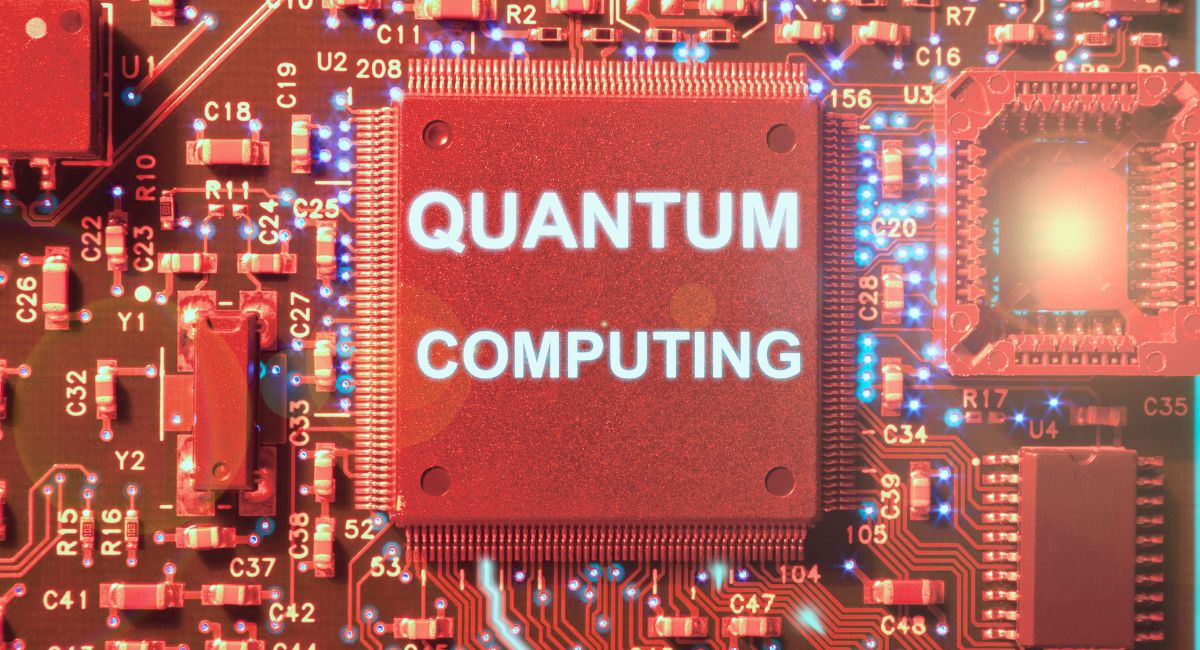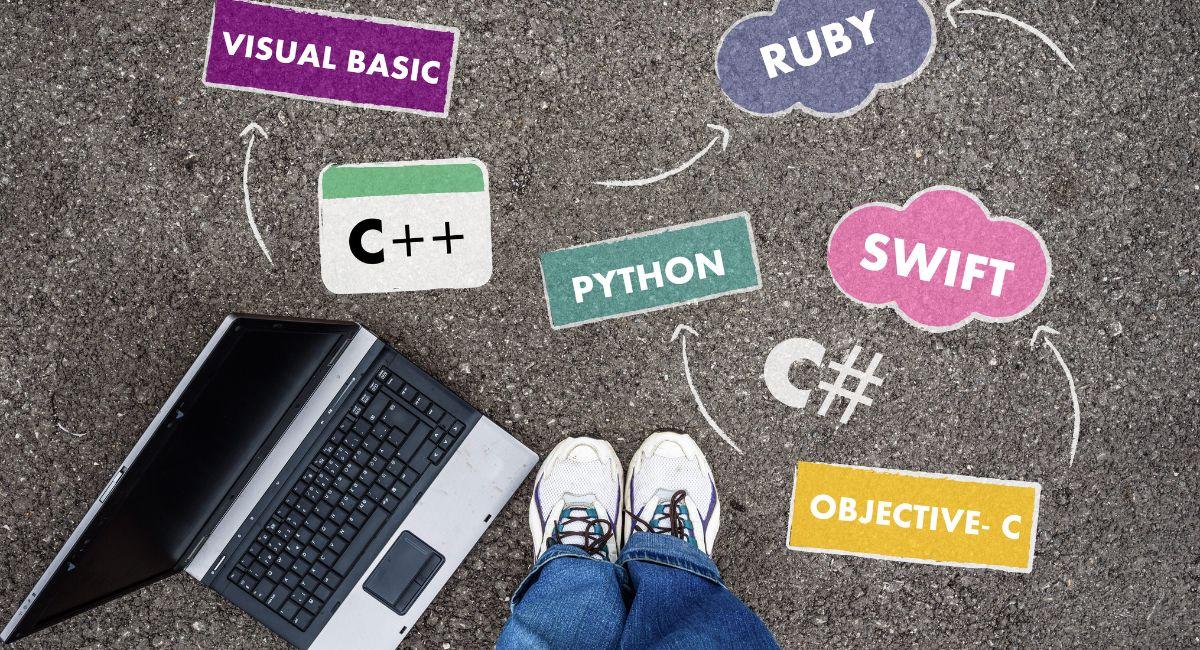Top 10 Ways Advance Quantum Computing Will Have Amazing Benefits In The Evolution Of Blockchain

Blockchain is a decentralized and distributed ledger technology that enables secure and transparent record-keeping of digital transactions across a network of computers. It operates on a peer-to-peer network, where each participant (node) maintains an identical copy of the ledger. The blockchain’s strength lies in its immutability and cryptographic integrity, ensuring that once data is recorded, it cannot be altered retroactively.
Transactions in a are grouped into blocks and linked through cryptographic hashes, forming a continuous chain. This design enhances security, making it resistant to tampering and fraud. Consensus mechanisms, such as proof-of-work or proof-of-stake, are employed to validate and agree on the state of the ledger.
It finds applications in various industries beyond its original use in cryptocurrencies. It is used for smart contracts, decentralized finance (DeFi), supply chain management, healthcare, and more, offering increased transparency, efficiency, and trust in digital interactions.
Evolution of blockchain

The evolution of blockchain technology has been a fascinating journey, marked by significant milestones, paradigm shifts, and the continuous quest for innovation. The story begins with the introduction of Bitcoin in 2009, where blockchain served as the decentralized ledger underpinning the world’s first cryptocurrency. Satoshi Nakamoto’s creation showcased the potential of a distributed, tamper-resistant ledger secured by cryptographic principles. In the ensuing years, the exploration of blockchain expanded beyond digital currencies, leading to the creation of alternative cryptocurrencies and the conceptualization of diverse use cases.
One of the pivotal moments in the evolution of blockchain occurred with the introduction of Ethereum in 2015. Ethereum revolutionized the landscape by introducing smart contracts, and programmable scripts that could execute decentralized agreements automatically. This development shifted the narrative from a focus solely on peer-to-peer transactions to the broader concept of decentralized applications (DApps), opening doors to a new era of blockchain innovation.
The year 2017 witnessed the rise of Initial Coin Offerings (ICOs), a fundraising method that leveraged it’s token issuance capabilities. ICOs became a catalyst for the creation of numerous projects, highlighting the growing interest and investment in the technology. However, this period also brought challenges, including regulatory scrutiny and the need for increased accountability within the blockchain ecosystem.
As blockchain matured, attention shifted toward enterprise solutions. Companies recognized the potential of blockchain to enhance transparency, traceability, and efficiency in various industries. Projects such as Hyperledger and R3 Corda emerged, offering tailored blockchain solutions for enterprise use. The collaborative spirit extended to the formation of consortiums like the Enterprise Ethereum Alliance (EEA), aimed at establishing standards and promoting interoperability in the enterprise space.
The year 2020 witnessed the meteoric rise of Decentralized Finance (DeFi). Blockchain’s potential to disrupt traditional financial systems became evident as DeFi platforms facilitated lending, borrowing, and trading without intermediaries. The DeFi movement showcased the power to democratize finance, providing users with unprecedented access to financial services. However, challenges such as security vulnerabilities and scalability issues underscored the need for further refinement.
In 2021, Non-Fungible Tokens (NFTs) took center stage, demonstrating blockchain’s capacity to tokenize and authenticate unique digital assets. NFTs transformed industries like art, music, and gaming, allowing creators to monetize their digital creations and redefine ownership in the digital realm. The mainstream adoption of NFTs highlighted blockchain’s potential beyond financial applications, emphasizing its role in reshaping various sectors.
Amidst these developments, the environmental impact of proof-of-work consensus mechanisms drew scrutiny. In response, the blockchain community witnessed a shift toward more sustainable consensus models, with Ethereum initiating its transition to Ethereum 2.0, embracing proof-of-stake for improved scalability and reduced energy consumption.
Looking ahead, the evolution of blockchain continues with a focus on interoperability, cross-chain solutions, and the realization of Web3—a vision of a more decentralized and user-centric internet. As blockchain matures, ongoing efforts aim to address scalability challenges, enhance sustainability, and foster a more interconnected and inclusive digital ecosystem. The journey of blockchain, from its nascent days as a ledger for digital currency to its current position at the forefront of technological innovation, reflects an enduring commitment to shaping a decentralized and transformative future.
Also, read- Top 10 Reasons Layer 2 Blockchain Is An Ideal And Amazing Setup For NFT Developers
Top 10 ways advance quantum computing will benefit the evolution of Blockchain

The potential integration of advanced quantum computing with blockchain technology holds the promise of transformative advancements. While quantum computers are still in their early stages of development, their unique capabilities could significantly impact the evolution of blockchain in various ways:
- Enhanced Cryptography:
- Quantum computers have the ability to break traditional cryptographic algorithms, such as RSA and ECC, which are widely used in blockchain for securing transactions. Advanced quantum-resistant cryptographic algorithms can be implemented to safeguard blockchain networks against quantum attacks, ensuring the continued security of transactions.
- Secure Key Generation:
- Quantum computing can be leveraged for secure key generation. Quantum key distribution (QKD) protocols can enhance the generation and distribution of cryptographic keys, making blockchain systems more resilient against attacks attempting to compromise private keys.
- Improved Consensus Algorithms:
- Quantum computing’s parallel processing capabilities can contribute to the development of more efficient consensus algorithms. Quantum-resistant consensus mechanisms could be designed to withstand attacks from both classical and quantum computers, ensuring the security and integrity of blockchain networks.
- Optimized Hash Functions:
- Quantum computers can optimize certain computational tasks, including hash function calculations. Quantum-resistant hash functions can be employed to fortify the integrity of blockchain data, reducing the risk of collision attacks that exploit vulnerabilities in classical hash functions.
- Faster Transaction Processing:
- Quantum computing’s parallelism can expedite transaction processing. Quantum-enhanced algorithms could be designed to handle complex computations more efficiently, potentially increasing the speed and throughput of networks.
- Random Number Generation:
- Quantum computers can generate true random numbers, overcoming the limitations of classical pseudo-random number generators. This can enhance the randomness and unpredictability crucial for cryptographic operations in blockchain systems, improving overall security.
- Optimized Smart Contract Execution:
- Quantum computing’s computational efficiency can be harnessed to optimize the execution of smart contracts. Quantum algorithms could accelerate certain computations, enhancing the performance of decentralized applications (DApps) and smart contract functionalities on blockchain platforms.
- Quantum-Secure Blockchain Networks:
- Quantum-resistant cryptographic primitives can be integrated into blockchain networks, ensuring their security against quantum attacks. Preparing blockchain systems for the quantum era is essential for long-term resilience and the protection of user assets.
- Tokenomics and Quantum Tokens:
- Quantum tokens, based on quantum-resistant cryptographic schemes, could be introduced. These tokens would be immune to quantum attacks, providing a quantum-secure means of representing assets and value on networks.
- Quantum-Secure Identity Management:
- Quantum computing can enhance the security of identity management. Quantum-resistant encryption and authentication mechanisms could be employed to secure user identities and credentials, reducing the risk of identity-related attacks.
While the practical realization of large-scale quantum computers is still a work in progress, preparing technology for the quantum era is essential. Collaboration between the quantum and communities can lead to the development of hybrid solutions that harness the strengths of both technologies, ensuring a secure and robust future for decentralized systems.
We are revolutionizing the blockchain landscape and intensifying innovation to its maximum potential. 💪🏼 🔥
— SaitaChain (@SaitaChainCoin) January 25, 2024
Welcome to the ultimate transformative phase where excellent engineering meets game-changing abilities. 🚀
The SaitaChain Blockchain Beta Testnet is NOW LIVE ⛓️⚡️… pic.twitter.com/QaEiPDpIui
Benefits of the evolution of Blockchain

The evolution of technology brings about a multitude of benefits, influencing various sectors and aspects of the digital landscape. Here are key advantages resulting from the ongoing evolution of blockchain:
- Enhanced Security:
- Improved Transparency and Accountability:
- The transparent and immutable nature provides a tamper-proof record of transactions. This fosters increased transparency in supply chains, financial transactions, and other processes, leading to improved accountability and trust among stakeholders.
- Decentralization and Reduced Intermediaries:
- It eliminates the need for intermediaries in many processes. This reduction in middlemen leads to faster, more cost-effective transactions and increased autonomy for users.
- Efficiency and Cost Reduction:
- It streamlines processes by providing a single, shared source of truth. This results in increased operational efficiency and cost reduction, particularly in industries such as finance, supply chain, and healthcare.
- Smart Contracts for Automation:
- The evolution of smart contracts allows for the automation of contractual agreements. These self-executing contracts enable the automatic execution of predefined terms when conditions are met, reducing the need for manual intervention and minimizing the risk of errors.
- Interoperability and Collaboration:
- Advancements in interoperability solutions enable different networks to communicate and collaborate seamlessly. This fosters a more connected and interoperable blockchain ecosystem, allowing for the efficient transfer of assets and information between networks.
- Tokenization of Assets:
- It facilitates the tokenization of real-world assets, representing ownership digitally. This opens up new opportunities for fractional ownership, liquidity, and efficient trading of traditionally illiquid assets such as real estate and art.
- Decentralized Finance (DeFi) Innovation:
- The evolution of blockchain has given rise to decentralized finance (DeFi), transforming traditional financial services. DeFi platforms offer decentralized lending, borrowing, and trading, providing users with more inclusive and accessible financial services.
- Non-Fungible Tokens (NFTs):
- The emergence of NFTs, enabled by blockchain, revolutionizes the way digital assets and collectibles are created, bought, and sold. NFTs enhance ownership and authenticity, opening up new possibilities in the art, gaming, and entertainment industries.
- Sustainable and Green Blockchain Initiatives:
- As concerns about the environmental impact of blockchain grow, the evolution of the technology includes efforts to adopt more sustainable consensus mechanisms, such as proof-of-stake. These initiatives aim to reduce energy consumption and enhance the environmental sustainability of blockchain networks.
- Global Financial Inclusion:
- It has the potential to bring financial services to the unbanked and underbanked populations. With reduced barriers to entry and simplified access to financial tools, blockchain contributes to global financial inclusion.
- Tamper-Resistant Voting Systems:
- The evolution of blockchain introduces secure and tamper-resistant voting systems. Blockchain-based voting ensures the integrity of electoral processes by providing a transparent and auditable record of votes.
Conclusion
In conclusion, the ongoing evolution of technology represents a transformative force with far-reaching implications across various industries. The journey from its inception as the underlying technology for cryptocurrencies to its current state as a versatile and secure solution for decentralized applications has been marked by continuous innovation and adaptation. The benefits derived from this evolution touch upon fundamental aspects of modern digital interactions, fostering a more secure, transparent, and efficient ecosystem.
The core strengths, including enhanced security, transparency, and decentralization, contribute to the reliability and trustworthiness of digital transactions. The advent of smart contracts automates processes, reduces reliance on intermediaries, and improves overall operational efficiency. Innovations like decentralized finance (DeFi) and non-fungible tokens (NFTs) showcase the adaptability of blockchain, opening up new frontiers in the financial and creative realms.
Its role in global financial inclusion, tokenization of assets, and the creation of tamper-resistant systems, such as secure voting, underscores its potential to address societal challenges and democratize access to various services. The push towards sustainable blockchain initiatives reflects a commitment to environmental responsibility, aligning the technology with broader goals of eco-friendly solutions.
As interoperability solutions advance, networks become more interconnected, fostering collaboration and creating a foundation for future innovations. The tokenization of real-world assets and the rise of fractional ownership exemplify the democratization of traditionally exclusive markets.
Looking forward, the evolution is poised to continue, presenting opportunities for further enhancements in scalability, sustainability, and usability. As the technology matures, it will likely play a pivotal role in shaping the future of decentralized technologies, contributing to a more inclusive, transparent, and interconnected global digital landscape. The continued collaboration between the community, industry stakeholders, and regulators will be instrumental in realizing the full potential of technology and ensuring its positive impact on various facets of our digital lives.




























































